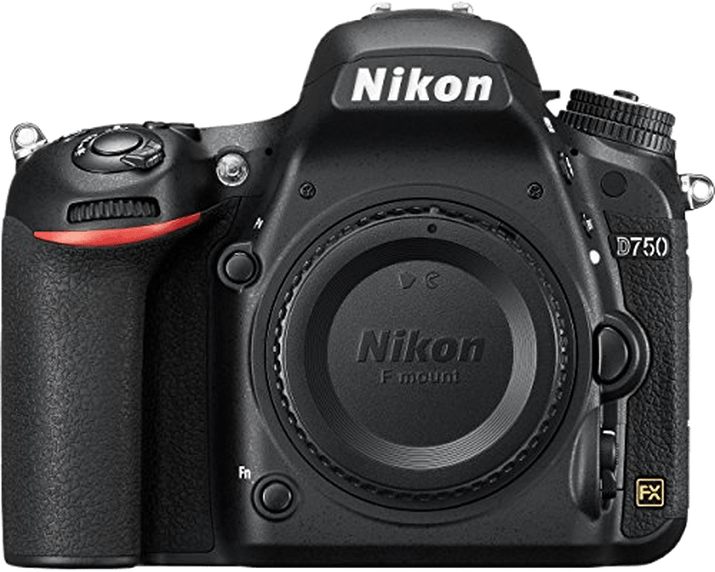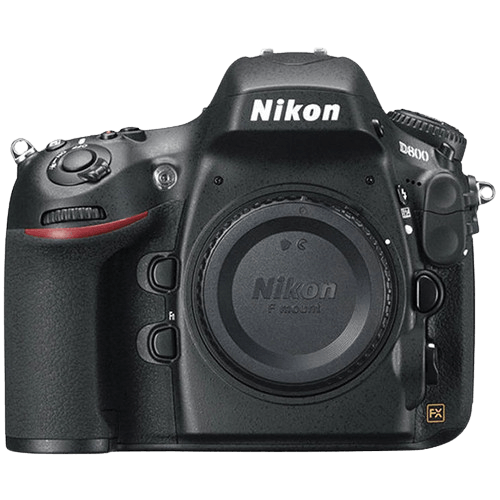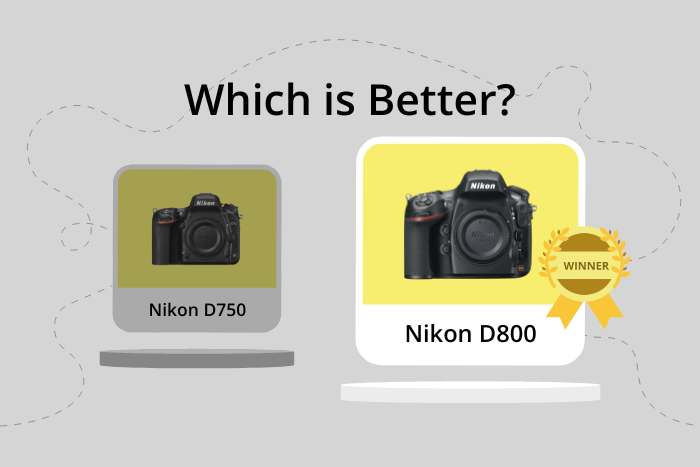Nikon D750 vs D800 Comparison
Nikon D750

Nikon D800

The Nikon D800 edges out the Nikon D750 with a score of 69/100 compared to the D750’s 68/100. Both cameras are DSLR models, released in 2012 and 2014 respectively, with the D800 having a higher launch price of $2999 compared to the D750’s $2300. They share similarities in size and weight, with the D800 measuring 146 x 123 x 82mm and weighing 1000g, while the D750 is slightly smaller and lighter at 141 x 113 x 78mm and 750g.
The Nikon D800’s advantage lies in its higher score, indicating superior overall performance. However, the Nikon D750 holds its own with a lower launch price and a more compact, lightweight design. This may make it more appealing to photographers who prioritize portability and affordability.
Taking into account the scores, specifications, and differences, the Nikon D800 proves to be the better option for those seeking top performance, while the Nikon D750 offers a more budget-friendly and portable alternative.
Nikon D750 vs D800 Overview and Optics
The Nikon D800 outperforms the Nikon D750 in optics, scoring 74/100 compared to the D750’s score of 71/100. Both cameras share common specifications, such as the CMOS sensor type, full-frame sensor size, Nikon F FX lens mount, and lack of image stabilization.
The D800 excels with its higher megapixel count of 36.3, providing superior image resolution and detail compared to the D750’s 24.3 megapixels. Additionally, the D800’s sensor receives a DXOMARK score of 95, which is two points higher than the D750’s score of 93. This indicates better overall image quality and low-light performance in the D800.
On the other hand, the D750 has a faster shooting speed of 6.5 frames per second, compared to the D800’s 4 frames per second. This makes the D750 more suitable for capturing fast-moving subjects or action photography. The D750 also has a more advanced processor, the Expeed 4, which contributes to faster image processing and improved noise reduction compared to the D800’s Expeed 3 processor.
In terms of optics, the Nikon D800 is the superior choice due to its higher megapixel count and better sensor performance. However, the D750 is not without its strengths, offering a faster shooting speed and a more advanced processor. The decision between these two cameras ultimately depends on the specific needs and priorities of the photographer.
Nikon D750 vs D800 Video Performance
The Nikon D800 slightly outperforms the Nikon D750 in video capabilities, with a score of 57/100 compared to the D750’s 56/100. Both cameras share some common video specifications, such as Full HD max video resolution and max video dimensions of 1920 x 1080. Despite these similarities, there are key differences that set them apart.
The D800 surpasses the D750 with its built-in time-lapse functionality, providing users with a creative tool for capturing stunning visuals over extended periods. This feature is absent in the D750, which may deter videographers who value time-lapse capabilities.
On the other hand, the D750 has a higher max video frame rate of 60fps, compared to the D800’s 30fps. This allows the D750 to capture smoother video footage, particularly in fast-moving scenes or when recording action sequences. The increased frame rate is a significant advantage for those who prioritize capturing fluid motion in their videos.
Though the D800 has the edge in overall video score and time-lapse functionality, the D750’s higher frame rate makes it a strong contender for certain filming scenarios. Users should weigh these differences based on their specific filming needs and preferences. Ultimately, both cameras offer solid video performance, but the D800’s time-lapse function gives it a slight advantage over the D750.
Nikon D750 vs D800 Features and Benefits
The Nikon D750 takes the lead in features with a score of 59/100, while the Nikon D800 trails slightly behind at 57/100. Both cameras share some common specifications, such as a 3.2-inch screen size, no touchscreen, no GPS, WIFI capability, and no Bluetooth. However, there are a few key differences that set them apart.
The D750 outperforms the D800 in terms of screen resolution and flexibility. With 1,229,000 dots, the D750’s screen resolution is significantly higher than the D800’s 921,000 dots. This ensures sharper and clearer image previews for the D750 users. Moreover, the D750 has a flip screen, which proves useful for capturing images and videos from various angles, while the D800 lacks this feature.
On the other hand, the D800 has some advantages over the D750. Although these differences are not reflected in the feature score, they might be significant for some users. For instance, the D800 may have a higher overall image quality or better performance in low-light conditions. However, these factors are not part of this specific comparison.
In terms of features, the Nikon D750 is a better choice due to its higher resolution screen and the added flexibility of a flip screen. The Nikon D800, despite its slightly lower feature score, may still offer advantages in other aspects, such as image quality or low-light performance. Ultimately, the choice between these two cameras depends on the specific needs and preferences of the user.
Nikon D750 vs D800 Storage and Battery
The Nikon D750 triumphs over the Nikon D800 in storage and battery with a score of 79/100, compared to the D800’s 71/100. Both cameras share common specifications, including two memory card slots and compatibility with SD, SDHC, and SDXC memory cards. Additionally, both cameras use the same EN-EL15 battery type and lack USB charging capabilities.
The D750’s advantage lies in its battery life, offering 1230 shots per charge, significantly more than the D800’s 900 shots. This longer battery life makes the D750 more suitable for extended shooting sessions and reduces the need for frequent battery replacements.
On the other hand, the D800 has a slight edge in memory card compatibility, as it also accepts Compact Flash cards and is UHS-I compatible. This added compatibility could be beneficial for photographers who already have a collection of Compact Flash cards or require faster data transfer speeds.
Taking into account the longer battery life and slightly better storage options, the Nikon D750 stands as the superior choice in this comparison. The Nikon D800, however, remains a viable option for those who value Compact Flash compatibility and UHS-I support.
Nikon D750 vs D800 Alternatives
Still not sure which camera is right for you? These related camera comparisons may inspire you:

